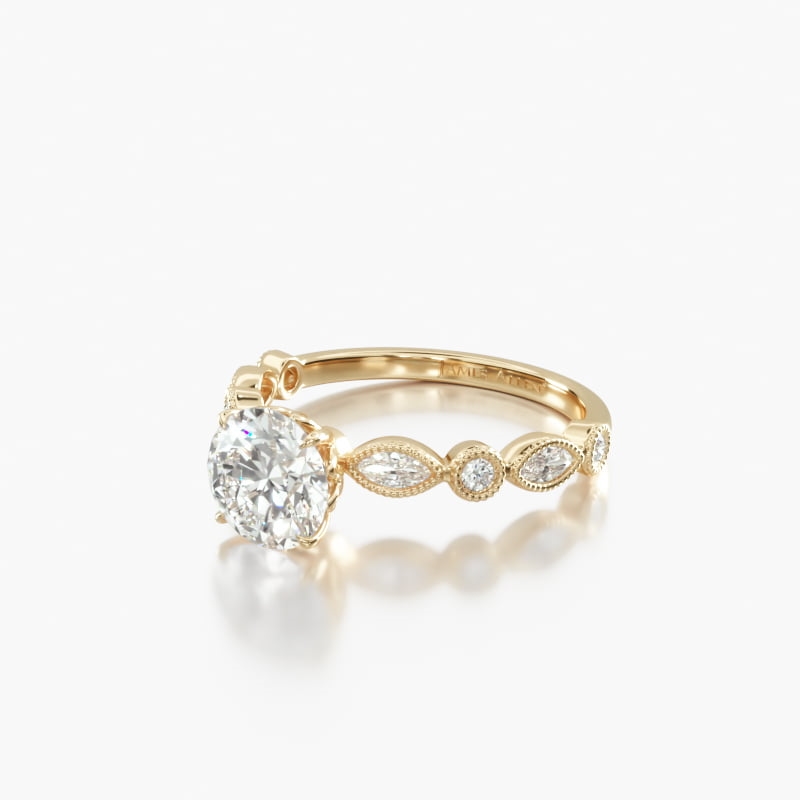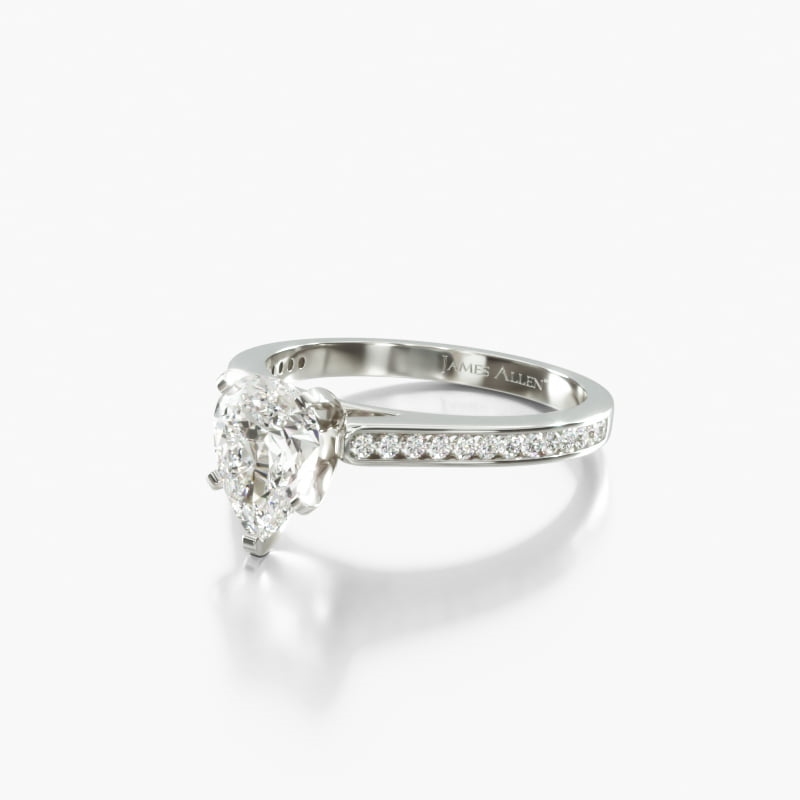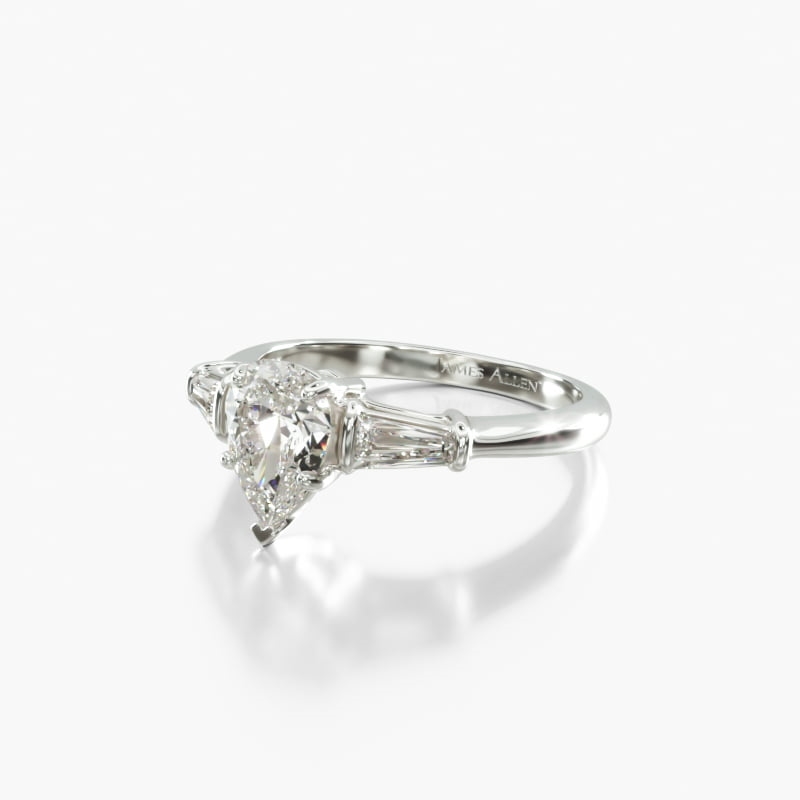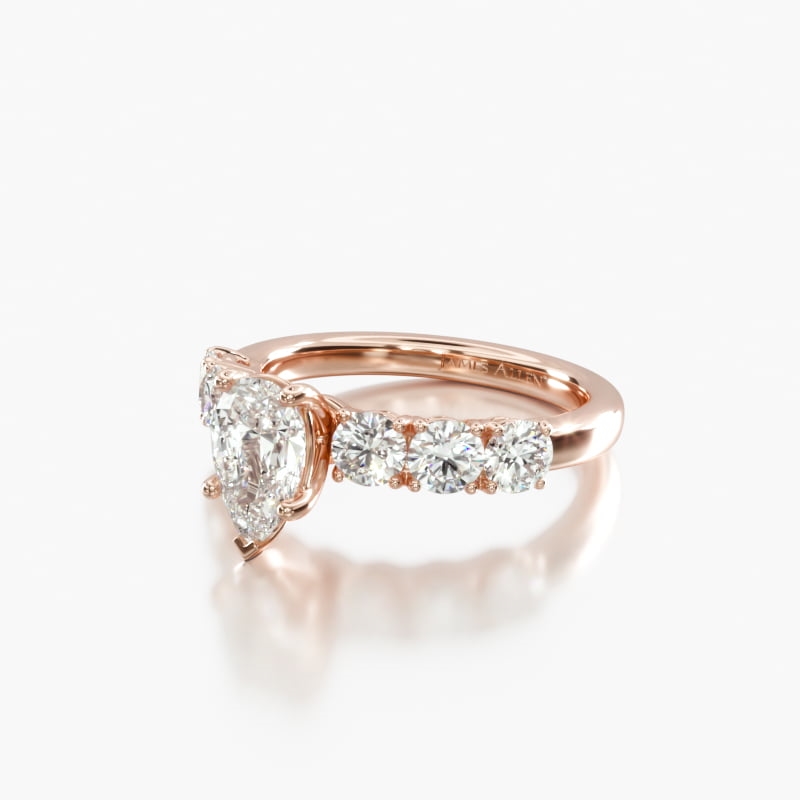Every detail about your engagement matters, and your engagement ring is not a tiny one to skip.
Choosing the right metal for your engagement ring is as crucial to its beauty as the gemstone itself, and its durability and maintainability will depend on it too.
Each choice has its advantages whether it’s white, rose, yellow gold, or platinum. And this guide will walk you through all the characteristics of each one of those metals.
But before we begin, let’s explain the concept of metal purity.
What is Metal Purity?
Metal purity is an essential factor to consider when buying engagement rings, the concept behind it is that pure metals are mixed with other metals to form alloys that improve their characteristics, so when you’re buying gold you’re not buying pure gold but a gold alloy.
The purity of the metal is the percentage of the metal in the alloy, the purity of gold is measured in karats. Pure gold is 24 karats, but it is too soft for most jewelry applications. Common karat include 18k, 14k, and 10k, with the higher karat indicating a higher gold content. For example, 18k gold is 75% pure gold, while 14k gold is 58.3% pure.
So before you start shopping for the metal for the engagement ring you will need to ask the jeweler about its purity, so you can get what you’re looking for.
Which Metal to Choose If Durability is the Priority?
If you’re looking for durability then the answer is platinum, its characteristics make it the best choice for a durable engagement ring that will stand the test of time.
Platinum is known for its exceptional durability and strength. It is a dense and heavy metal, making it highly resistant to wear and tear. It is more durable than gold, which can be prone to scratching and bending over time.
Also platinum is highly resistant to scratches, which is crucial for a piece of jewelry that is worn daily. While it develops a natural patina over time, it does not lose metal volume, ensuring long-term durability.
Platinum is a pure metal, typically alloyed with a small percentage of other platinum group metals. Its purity enhances its strength and resistance to corrosion.
It is known for its longevity. It maintains its appearance well over time, and its durability ensures that it can be passed down through generations without significant wear.
Platinum provides a secure setting for gemstones, especially diamonds. Its strength and malleability allow for intricate designs and secure prong settings.
Which Metal to Choose If You Prefer More Color Options?
If you’re looking for more color options then the answer is gold.
White, rose, and yellow gold offer different aesthetic appeals and can match anyone’s taste with the style that they prefer.
Yellow gold is a classic and timeless option that never goes out of style. It’s a traditional pick that feels warm and looks elegant. This type of gold goes well with many skin tones and has a shiny, rich appearance.
Rose gold is getting more popular because it has a romantic and vintage-inspired style. Its pinkish color gives the ring a unique and warm touch, making it a cool and stylish choice.
White gold is a modern and flexible choice that looks smooth and contemporary. It’s liked by people who want something stylish like platinum but without the high cost.
Which Metal to Choose for Allergies and Sensitivities?
Durability and color options are amazing, but if you have allergies then you want something to cope with that. Choosing a hypoallergenic metal that is less likely to cause skin irritation is going to be essential for allergic people.
Platinum is a hypoallergenic metal that rarely causes allergic reactions. It is pure and doesn’t contain common allergens like nickel. Platinum is an excellent choice for individuals with sensitive skin.
Similar to platinum, palladium is hypoallergenic and is often used as an alternative to white gold. It does not contain nickel, making it a suitable option for those prone to nickel allergies.
Titanium is also a lightweight and durable metal that is highly resistant to corrosion. It is also hypoallergenic, making it a good choice for individuals with metal sensitivities.
What Metals to Stay Away from for Allergies and Sensitivities?
Individuals with allergies and sensitivities to certain metals should avoid those that are known to be common allergens.
Nickel is a common allergen and can cause contact dermatitis in sensitive individuals. It is often used as an alloy in white gold and other metals. Those with nickel allergies should avoid jewelry containing nickel.
Copper, when used in certain alloys, can cause skin reactions in some people. While pure copper is less likely to cause allergies, copper alloys like brass and bronze may contain nickel or other allergenic metals.
Lower karat gold, such as 10k or 14k, may contain higher percentages of alloys like nickel, which can be problematic for individuals with sensitivities. Opting for higher karat gold (18k and above) reduces the risk of nickel content.
Which Metal Costs More?
The cost of a metal depends on its rarity, purity, and demand. These three factors determine the cost of the metal you’re considering.
Platinum is one of the most expensive metals used in jewelry. It is rare, dense, and has a naturally white color. The labor-intensive process of mining and refining platinum contributes to its high cost.
If you’re considering gold the cost of it varies based on its karat. 24-karat gold is the purest form but is softer and more expensive. 18-karat and 14-karat gold are more commonly used in jewelry due to their balance of durability and cost.
Palladium is generally less expensive than platinum but more costly than gold. It shares some similar properties with platinum, making it a popular alternative.
Silver is more affordable compared to gold, platinum, and palladium. It is commonly used for various types of jewelry, and its lower cost makes it accessible to a wide range of consumers.
White gold is typically more affordable than platinum. However, the cost can vary based on the alloy used, with nickel-free alloys often being pricier.
Which Metal is Heavier?
The weight of a piece of jewelry is influenced by both the metal used and the design of the item.
Platinum is a dense metal, and as a result, jewelry made of platinum tends to be heavier compared to similar-sized pieces made of other metals.
Gold is less dense than platinum, so jewelry made of gold is generally lighter than platinum counterparts of the same size and design. The karat of the gold also affects its density, with higher karats being denser.
Palladium is lighter than platinum but denser than gold. Jewelry made of palladium is generally lighter than platinum but may be heavier than the equivalent piece made of gold.
Silver is less dense than gold, making silver jewelry generally lighter than gold jewelry of the same size and design.
Which Metal Requires Less Maintenance and Care?
I am sure you’d prefer to buy a metal that requires less maintenance than one that is maintenance demanding. I am sure you would want to use that time for more engaging activities than cleaning your ring.
The maintenance and care requirements for jewelry metals can vary based on factors such as hardness, durability, and reactivity.
Platinum is known for its durability and resistance to wear. While it may develop a natural patina over time, some people appreciate this characteristic as part of platinum’s unique charm. Regular cleaning and occasional professional polishing can help maintain its luster.
Palladium, like platinum, is resistant to tarnish and corrosion. It requires minimal maintenance compared to some other metals. Regular cleaning with mild soapy water and a soft brush can help keep palladium jewelry looking its best.
Gold is a relatively soft metal, and depending on the karat, it may be prone to scratching and bending. Regular cleaning with a mild soap and water solution, along with occasional professional polishing, can help maintain the shine of gold jewelry.
Silver is prone to tarnishing, especially when exposed to air and certain chemicals. Regular cleaning with a silver polishing cloth or a mild silver cleaner can help remove the tarnish. Storing silver jewelry in airtight containers can also slow down the tarnishing process.
Summary
This was a quick comparison between the characteristics of each type of metal for your engagement ring.
The best metal for an engagement ring is the best metal that fulfills your needs in terms of cost, beauty, maintenance, and more other factors that determine the characteristics of each metal.
It’s a matter of style and preference added to it the financial factor and longevity and maintainability factors.
Now the choice is yours.




